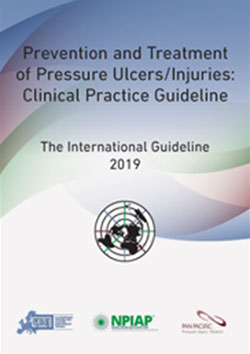Upgrade your patient skin care with the latest innovations

When a smart phone update is released, you download it to take advantage of the extra functionality and better user experience. When it comes to your patient skin care products, it’s just as important to stay on top of the latest innovations.
Skin care that worked 15 years ago might still work, but it also might lag behind the latest research. Combining science and nature, Remedy Intensive Skin Therapy products were thoughtfully developed to make your job easier, while still supporting even the most fragile skin.
Read about four areas of skin care that have evolved over the years to see if your products need an upgrade.
1 | Changing ingredient safety standards
Did you know that some once-common skin care ingredients are now viewed as harmful to the body? Studies even give a thumbs-down to added scents, noting that fragrance formulations could contain up to 300 different types of chemicals,1 but because they’re “trade secrets,” their sub-ingredients don’t need to be listed on the skin care product label.1 The problem is, some of these chemicals have been linked to allergic reactions, as well as cancer.2
Because of the potential allergens, a fragrance-free option for your patients makes sense.
Fragrance formulations could contain up to 300 different types of chemicals1
Along with fragrances, dyes are fading out of favor as well. Although added colors might turn a drab moisturizer color into a pretty concoction, they might also be associated with problems like ADHD for young patients.3
Also getting a bad rap are parabens. Often added to skin care products as preservatives, parabens are chemicals that have been put under serious scrutiny by researchers. They’ve been shown to cause skin irritation,4 and one study in pregnant rats resulted in a possible link to reproductive disruption in male offspring.5
Sulfates pose another concern, as long-term use may irritate the skin6 and the manufacturing of certain types of sulfates can form nitrates, which have also been linked to cancer risks.7
Even aloe, a long-beloved skin soother, has been shown to cause allergic reactions.8
Newer skin care products use the latest science to leave out ingredients that might do harm.

2 | An aging population means more patients with fragile skin
Some predictions estimate that by 2050, one in six people in the world will be over the age of 65, up from one in 11 in 2019.9
Translation for you and your staff: more patients with aging skin conditions than ever before.
As skin ages, it loses moisture and elasticity, gets thinner and more fragile, bruising easily.10 Some soaps can make an older patient’s dry skin drier and itchy, which can lead to scratching, creating more problems.
The International League of Dermatological Societies has said that aging skin is “one of the most important grand challenges in global skin health,” but researchers also say that promoting skin health in turn promotes healthy aging.11
Aging skin is “one of the most important grand challenges in global skin health.”
—The International League of Dermatological Societies
In fact, a consensus document by global aging and dermatology experts states, “Healthy skin can lead to better mental and emotional health with positive impact on social engagement, which leads to more active ageing and therefore economic growth.”12
To help your older patients remain healthy and active, be sure to use a gentle system of products for cleansing, moisturizing, supporting and protecting the skin barrier.
3 | NPIAP updated guidelines
When bedside nurses are all practicing skin care differently, it slows down the care. Following NPIAP guidelines makes it easier to standardize skin health. That includes using an effective skin care system.
The 2019 update to the National Pressure Injury Advisory Panel Prevention and Treatment of Pressure Ulcers/Injuries Clinical Practice Guideline includes a strong recommendation for implementing a skin care regimen.

It recommends steps to keep skin clean and hydrated, cleanse with a pH-balanced foam cleanser and protect the skin from moisture with a barrier product.13
Keep skin clean and hydrated, cleanse with a pH-balanced foam cleanser and protect the skin from moisture with a barrier product.14
For moisturizing, the Guideline notes, “Regular application of a moisturizer in a skin hygiene regimen is suggested for promoting skin hydration and preventing other adverse skin conditions, including dry skin and skin tears.”13
In some skin care products like Remedy Intensive Skin Therapy, you’ll see dimethicone listed. Dimethicone is a type of silicone that helps lock in moisture.14

4 | Botanicals have blossomed
Artificial ingredients have lost fans, while more natural ingredients are growing in popularity—annually by about 10 percent.15
Botanicals such as blue-green algae and soy have been shown to nourish and soothe at-risk skin. Soy proteins supply the nine essential amino acids that aren’t naturally produced by our bodies.16
Artificial ingredients have lost fans, while more natural ingredients are growing in popularity, annually by about 10 percent.16
Another potential botanical powerhouse? Green tea. Although many people of Chinese background have believed in the medicinal uses of green tea for thousands of years, clinical research is still ongoing to showcase its health effects.17 So far, some studies suggest that green tea has antioxidant properties and improves skin moisture levels.18
Taking into account research like this, plant-based ingredients make up the specially formulated blend of botanicals in the Remedy Intensive Skin Therapy system of products.
Key takeaway
Whether you have a favorite skin care regimen or you’re always looking for the next best thing, it’s important to choose products that keep up with the latest science and clinical evidence-based best practices.
References:
- https://www.ibtimes.com/why-smelling-good-comes-price-experts-reveal-2794418
- http://www.safecosmetics.org/get-the-facts/chemicals-of-concern/fragrance/
- https://www.forbes.com/sites/rachelhennessey/2012/08/27/living-in-color-the-potential-dangers-of-artificial-dyes/#3e0d2e12107a
- https://www.ewg.org/californiacosmetics/parabens
- https://pubmed.ncbi.nlm.nih.gov/24607685/
- https://www.healthline.com/health/beauty-skin-care/sulfates#takeaway
- http://www.natural-health-information-centre.com/sls-JACT-report.html#axzz6SHB7Fci
- https://www.researchgate.net/publication/5972908_Allergic_contact_dermatitis_to_Aloe_vera
- https://www.un.org/en/sections/issues-depth/ageing/
- https://my.clevelandclinic.org/health/articles/10979-aging-and-skin-care
- https://academic.oup.com/gerontologist/article/56/Suppl_2/S230/2605262
- https://globalcoalitiononaging.com/wp-content/uploads/2018/07/manchester-summit-consensus-statement_final.pdf
- National Pressure Injury Advisory Panel Prevention and Treatment of Pressure Ulcers/Injuries Clinical Practice Guideline, pages 84-85
- https://cosmeticsinfo.org/ingredient/dimethicone
- https://www.dermatologytimes.com/view/the-state-of-natural-skincare
- https://onlinelibrary.wiley.com/doi/full/10.1111/j.1541-4337.2007.00025.x
- https://onlinelibrary.wiley.com/doi/full/10.1111/ddg.12737
- https://www.ncbi.nlm.nih.gov/pmc/articles/PMC6930595/
